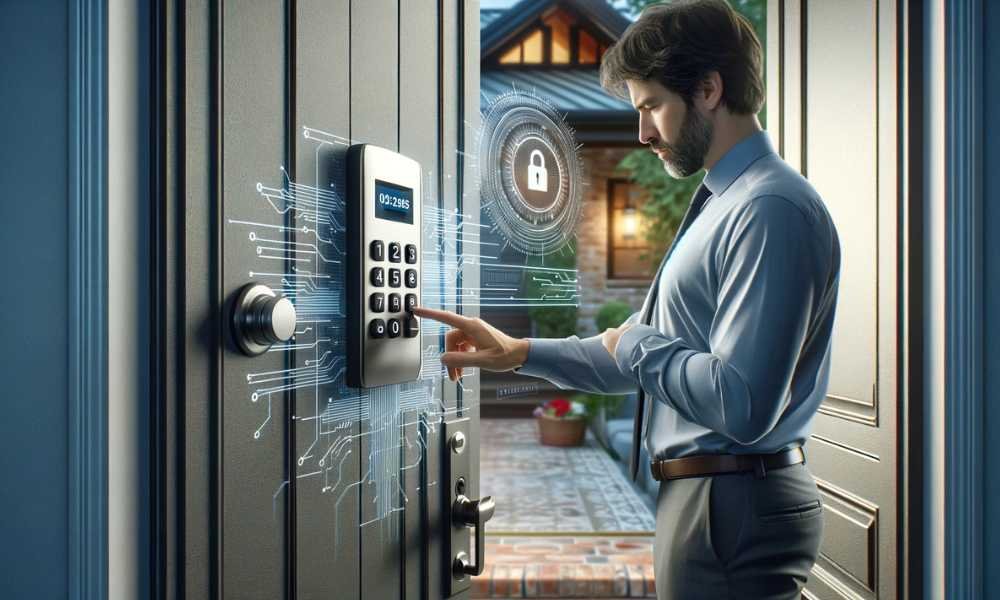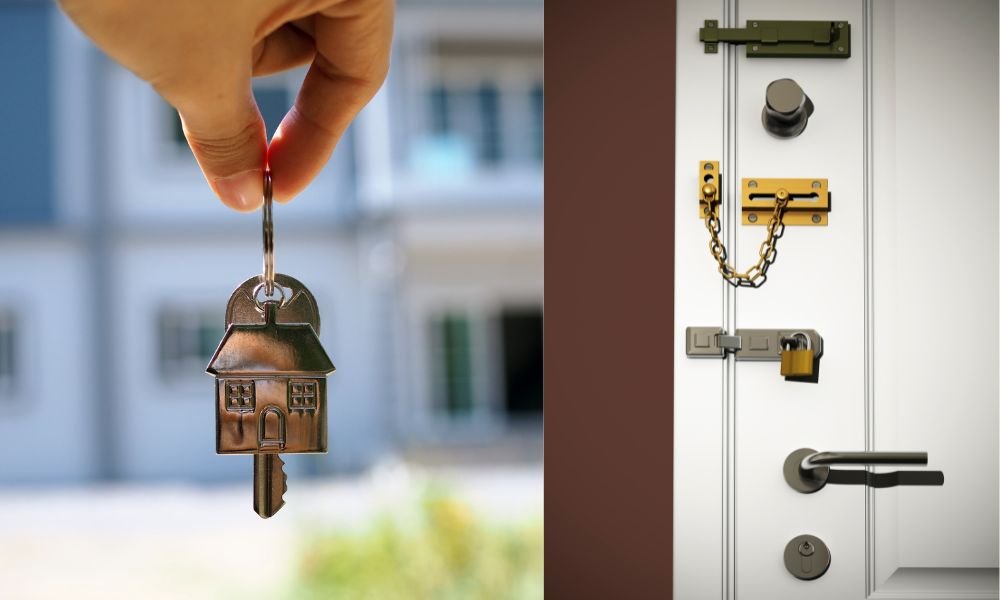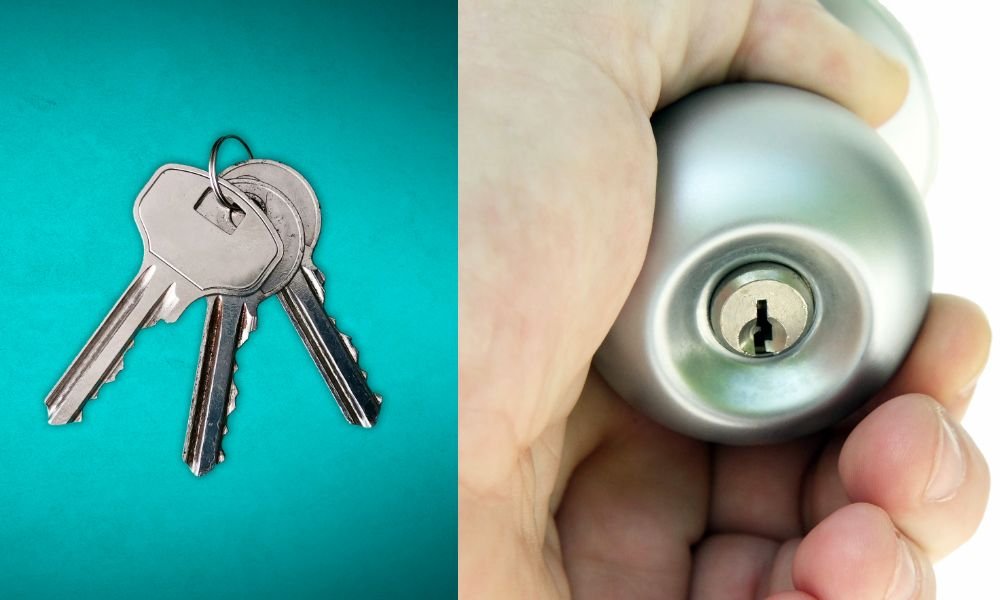Keypad door locks have become a popular security solution for both residential and commercial properties. They offer convenience, enhanced security, and eliminate the need for physical keys. However, there may come a time when you need to reprogram your keypad door lock, whether due to a security breach, new occupants, or simply to update the code. In this guide, we will elaborate on the steps of how to reprogram a keypad door lock, ensuring your property remains secure.
Understanding Your Keypad Door Lock
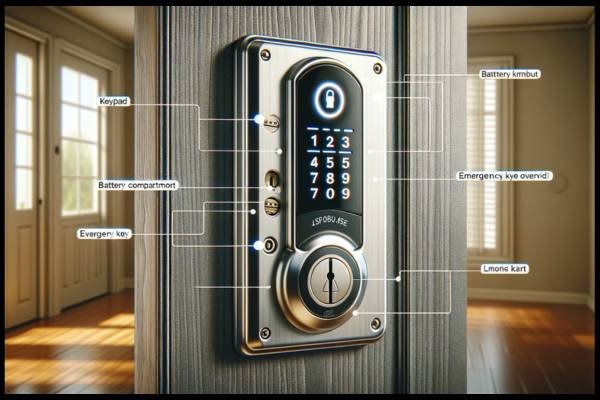
Before you start reprogramming, it is essential to understand its components and functionality. Keypad door locks come in various models, but they generally consist of the following parts:
A. Keypad
The keypad is the interface where you enter your code. It is usually located on the exterior of the door and can feature a variety of button layouts. This is the primary point of interaction with the lock.
B. Locking Mechanism
The locking mechanism could be a deadbolt or a latch, depending on the model. It secures the door when engaged and is typically controlled by the keypad and the internal electronics of the lock.
C. Batteries
Batteries provides power, they are usually housed inside the lock and should be checked regularly to ensure they are sufficiently charged. Low battery levels can affect the lock’s functionality.
D. Programming Button
The programming button is often hidden and used for setting new codes. This button is typically found inside the battery compartment or on the side of the lock. It is crucial for entering programming mode and making any necessary adjustments.
Each model may have specific features and functions, so it is crucial to refer to the user manual for your particular lock.
Steps to Reprogram Your Keypad Door Lock
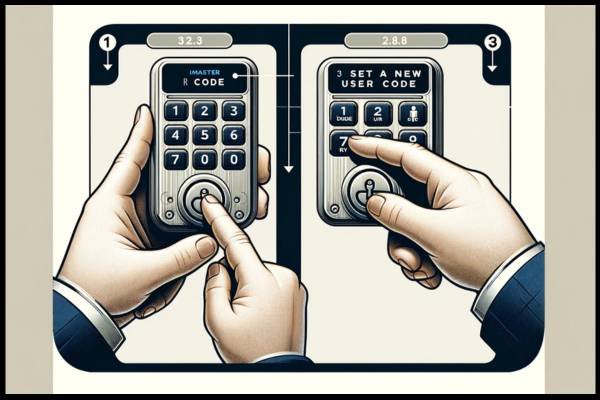
Step 1: Locate the Programming Button
The first step in reprogramming is to locate the programming button. This button is typically found inside the lock’s battery compartment or on the side of the lock. Consult your lock’s manual if you have trouble finding it.
Step 2: Enter Programming Mode
To enter programming mode, press and hold the programming button for a few seconds until you hear a beep or see a light indicator. This signals that the lock is ready to be programmed. Some models may require you to enter a master code to access programming mode.
Step 3: Delete Existing Codes
If you want to start fresh, you may need to delete existing ones before adding new ones. This step ensures that any old or unused codes are removed from the system. The process to delete codes can vary by model, but it usually involves entering the master code followed by a specific sequence of button presses.
Step 4: Set a New Master Code
Setting a new master code is a crucial security step. The master code is used to access the programming mode and should be kept confidential. To set a new master code, enter the current master code followed by a specific command to change the master code. Then, enter your new master code and confirm it.
Step 5: Add New User Code
Now that you have a new master code, you can proceed to add new user code. User codes used by different individuals to unlock the door. To add a new user code, enter the programming mode and follow the instructions in your lock’s manual to input new codes. Be sure to test each code to ensure it works correctly.
Step 6: Test the New Codes
After programming your new ones, it is essential to test them to ensure they function as expected. Enter each new code on the keypad to unlock the door. If any code does not work, re-enter programming mode and try again.
Tips for Reprogramming
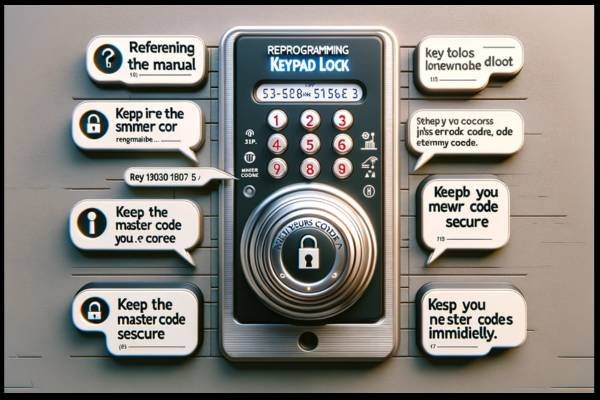
Reprogramming your keypad door lock can be a simple process if you follow some essential tips. Here’s a detailed look at how to ensure you get the most out of your keypad door lock reprogramming experience:
A. Keep Your Manual Handy
Every model is unique, with specific instructions and features. The user manual is your best friend when it comes to understanding your lock’s functionality. Always keep it accessible while reprogramming.
B. Choose Strong Codes
Avoid using easy-to-guess such as “1234” or “0000,” which can be quickly cracked by intruders. Instead, opt for a combination of numbers that are not easily associated with you or your property.
C. Regularly Update Codes
Even the best codes can become compromised over time, especially if they are shared with multiple users. To maintain high security, it’s wise to update your codes periodically. Set a reminder to change your codes every few months or after any significant change in your household or staff.
D. Test After Changes
Once you’ve reprogrammed your lock, it’s essential to test all new codes thoroughly. Enter each code on the keypad and ensure the numbers operate correctly. Testing helps you confirm that the reprogramming process was successful and that all new codes function as intended.
E. Backup Codes
While digital convenience is excellent, having a physical backup of your codes is a practical safety measure. Write down your codes and store them in a secure location, such as a safe or a locked drawer. This ensures that you have access to your codes in case you forget them or if an electronic failure occurs.
Troubleshooting Common Issues

Sometimes, you may encounter issues while reprogramming your keypad door lock. Here are some common problems and their solutions:
A. Lock Not Entering Programming Mode
Ensure you are pressing the programming button correctly and holding it for the required duration. Check the battery levels, as low batteries can affect functionality. If necessary, replace the batteries and try again.
B. Codes Not Working
Double-check that you are entering the codes correctly and in the proper sequence. Refer to the manual to ensure you are following the correct steps for your specific model. If the problem persists, reset the lock and re-enter the codes.
C. Forgotten Master Code
If you forget your master code, refer to the manual for instructions on how to reset it. This usually involves a specific reset procedure that may require you to remove the lock from the door. Follow the manual carefully to restore factory settings.
Security Considerations
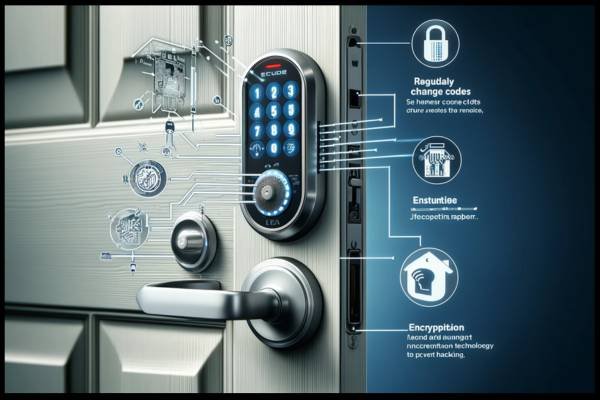
While keypad door locks offer convenience, it is crucial to maintain good security practices:
1. Change Codes periodically
Periodically changing your numbers reduces the risk of unauthorized access. Set a schedule to update it periodically, such as every three to six months. This habit helps maintain a high level of security.
2. Keep Codes Confidential
Do not share your codes with too many people. Only trusted individuals should have access to them. Avoid writing codes down in easily accessible places, and remind users not to share them with others.
3. Monitor Usage
Some advanced models allow you to monitor who accesses the lock and when. Use this feature to keep track of usage and detect any unusual activity. Regularly review access logs to ensure only authorized users are entering your property.
Conclusion
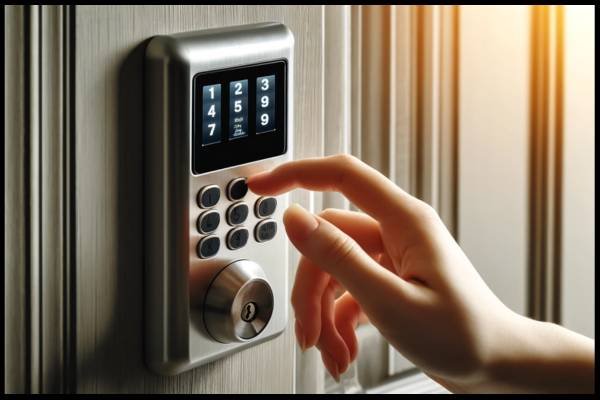
Reprogramming is a straightforward process that enhances the security of your property. By following the steps outlined in this guide and referring to your lock’s manual, you can easily update your codes and ensure that only authorized individuals have access. Regularly updating your codes and maintaining good security practices will help keep your property safe and secure.
Whether you are a homeowner, property manager, or business owner, understanding how to reprogram your keypad door lock is an essential skill. It ensures that your security system remains robust and adaptable to changing circumstances. By taking the time to learn and apply these steps, you can enjoy the convenience and peace of mind that comes with well-secured security.

